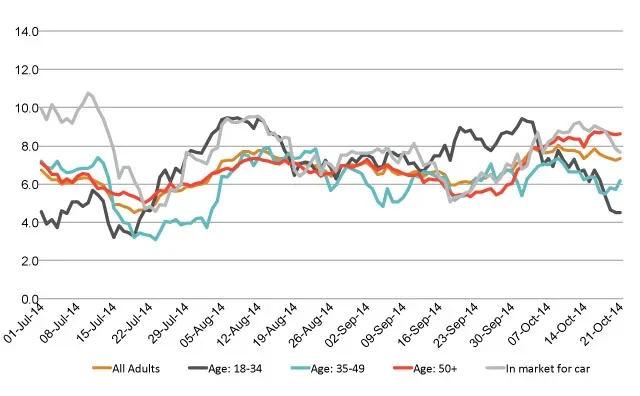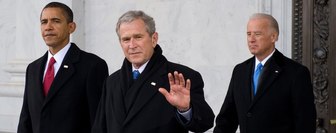Lincoln Motors’ quirky Matthew McConaughey ads have given the car manufacturer some of the best ad awareness and consumer perception numbers they’ve had in a long time, but they seem to be having little effect on possible consumer purchases.
Since the campaign was released online and began airing on TV in early September, the ads were given honorable parodies by both Ellen Degeneres and Conan O’Brien on their respective shows. Subsequently, Lincoln’s ad awareness had a major successful impact on four key demographic groups while having minimal effect on millennials:
- Ad awareness for potential car buyers in the market to make their next purchase in the next 12 months more than doubled from 15% to 32%, their highest levels in two years.
- Boomers (age 50+) gave the second best ad awareness boost, increasing from 16% to 28%.
- Overall adults age 18 and over saw awareness rise from 14% to 23%.
- Adults 34 – 45 ad awareness moved from 12% to 20%.
- Millennial ad awareness basically remained at the same 10% mark over the past several weeks.
Lincoln’s Buzz scores – where YouGov BrandIndex asks respondents "If you've heard anything about the brand in the last two weeks, through advertising, news or word of mouth, was it positive or negative?" – mirrored the improvements in ad awareness, again led by auto buyers and boomers since spring 2013.
However, for all the heightened ad awareness and Buzz scores for Lincoln, so far, the brand has just inched ahead in purchase consideration, YouGov BrandIndex’s key measurement of potential revenue. Consumers seemed to hesitate when the moody ads first began airing and then made only incremental gains afterward.
For example, when the McConaughey campaign first launched right after Labor Day, the percentage of potential car buyers who would consider Lincoln when they go car shopping actually dropped from 8% on September 11th to 5% one week later, then picked up to reach 9% by October 13th. That percentage is back at 8% now, the same score as when the campaign started.
Baby boomers had a similar reaction: purchase consideration slipped down from 7% upon the campaign launch to 5% by the third week of September, only to climb back up to its present 9% level.
All measurements are for adults 18 and over.
Ad Awareness: Lincoln
Purchase Consideration: Lincoln










